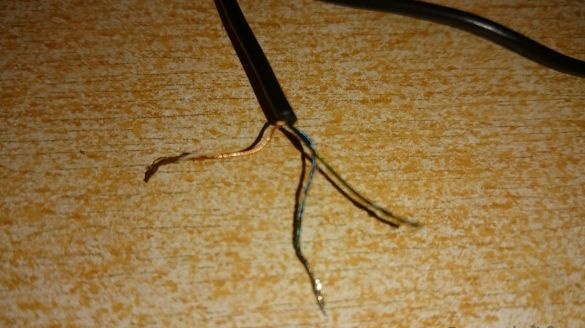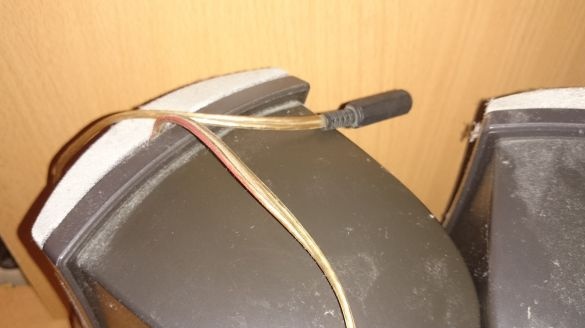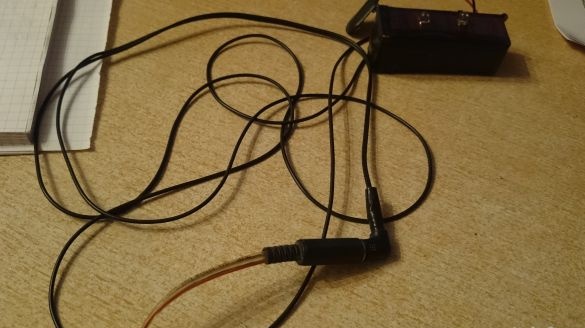1. LEDs 5mm green 2 pcs
2. Connector
3. Transistor kt817
4. Unnecessary headphones.
The first thing to do is cut off the liners, and see 3 wires:
Golden in this case is the central, blue and green exits to the inserts. We need a central and one of the outputs.
We assemble according to the scheme:
It is necessary to select a headphone jack and solder 2 wires there, then solder these two wires parallel to the speaker, at least I did so, there was no desire to include this miracle in the system unit (into the headphone jack) and parallel to the speaker, you can). The sound does not disappear. He brought out the connector under the crown-power.
The case is made of a small box from under something, in front there is a film under the tree, around the tape is black. I didn’t want to fantasize, the case can be steeper and more fun if necessary.
Vidosik in order to make sure that the system is working:






